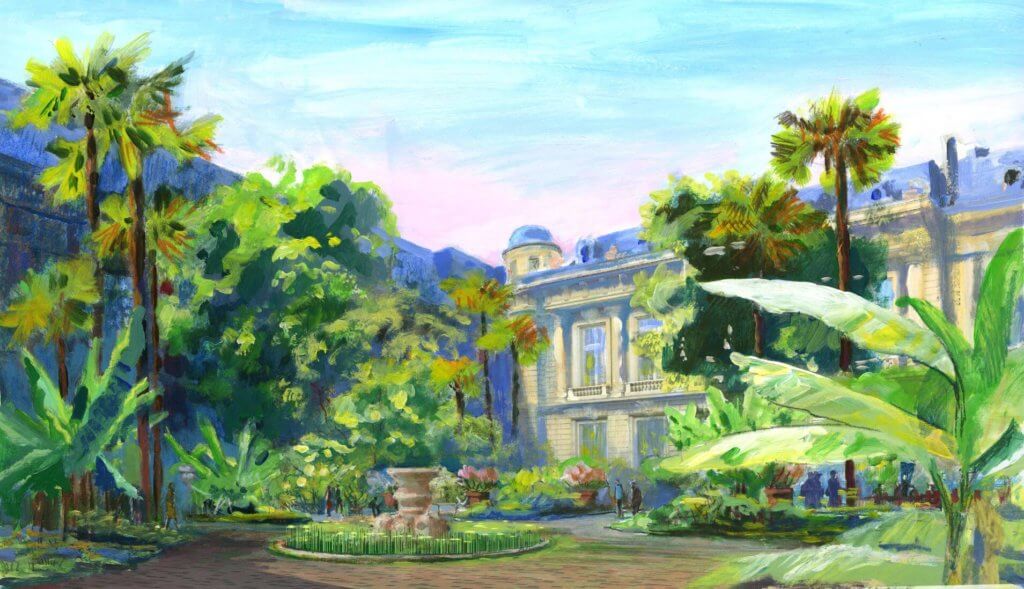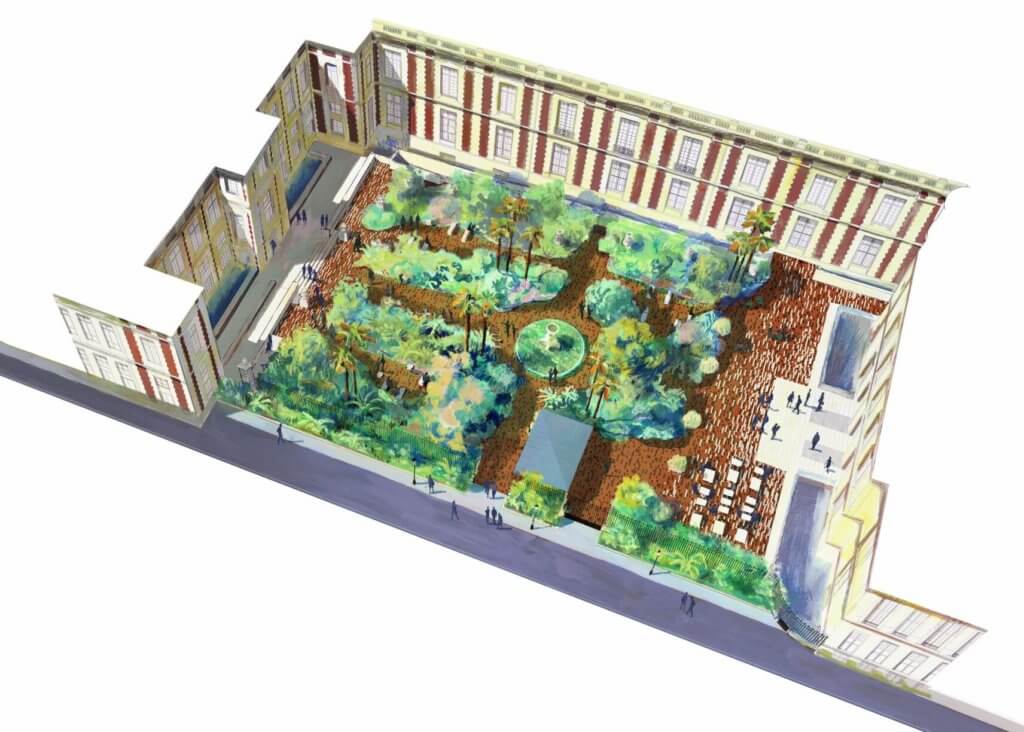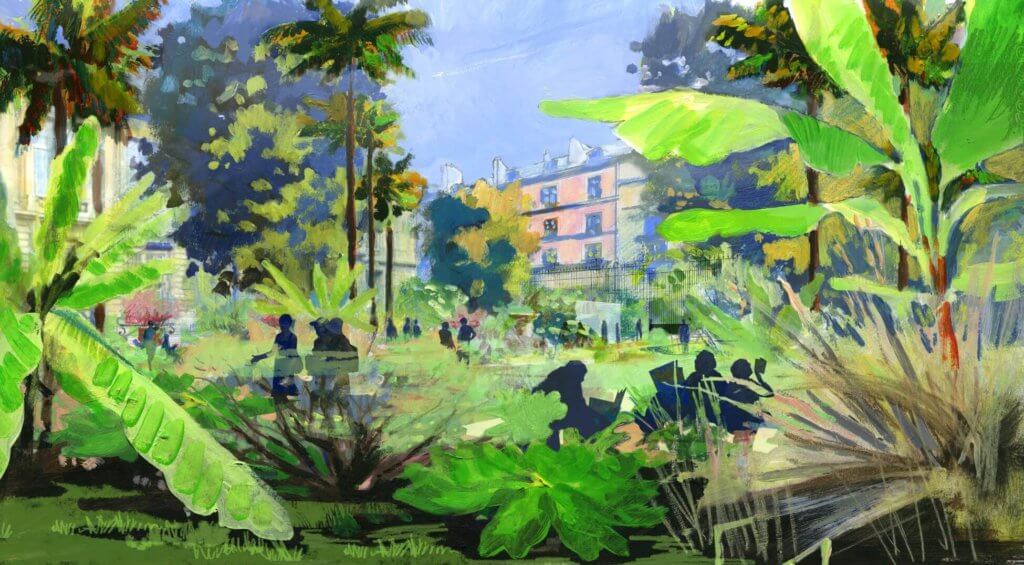
Illustration © Arnaud Madelénat
MUGO’s gardeners have started the works on the new garden of the Richelieu site, the historic birthplace of The National Library of France, which is going through a major restoration operation for the first time in its history.
MUGO won the project alongside artist and gardener Gilles Clément as well as landscapers Mirabelle Croizier and Antoine Quénardel (Atelier Tout se Transforme) as part of the “1% artistique“ (a public art grant),
supported by OPPIC and the Ministry of Culture. This new garden at the heart of the Quadrilatère Richelieu (Richelieu rectangle), marks the end of the 10-year long symbolic renovation of a French heritage property, led by the Ministry of Culture and Communication and Ministry of Higher Education.
Paper garden
Entitled “Hortus Papyrifera”, the project is directly linked to the BnF, a place dedicated to the preservation of books. As their Latin name suggests, Broussonetia papyrifera (paper mulberry tree),Fargesia papyrifera (cespitose bamboo), Tetrapanax papyrifera ( Chinese rice-paper plant), Edgeworthia papyrifera (paper bush), Betula papyrifera (paper birch), Cyperuspapyrus (Papyrus) are plant species used in the development of writing and printing media. The plan is to regroup and stage the ones growing under the Paris climate. Plants used as supports for writing and printing and small paperbark trees complete the plant range.

Illustration © Arnaud Madelénat
Historical consistency
The project consists of replicating a garden in the same spot where Cardinal Mazarin had his palace’s garden built in the 17th century, which was then rebuilt by Labrouste in its current form in the mid-19th century. The new drawing respects the original one, which no longer exists, and keeps the same divide between mineral alleys and the soil following the old outlines. The symmetrical composition of the space – divided into alleys which are split around the pool and the central fountain, forming four grass parterres- has been broadly maintained. In addition, this layout is consistent with the use and the pedestrian flow which are expected as part of the redevelopment of the BnF site. The replicate and extension of the original composition is completed by secondary alleys leading to “green reading rooms”.
Immersed in a rich vegetation, these spaces offer a more intimate environment. Static benches made of Euville stone, identical to the one used by the architect Bruno Gaudin for the design of the forecourt, will be installed to invite visitors to take breaks, read and meditate. The garden’s walkways (Access to the building, terraces and alleys) are specially designed to blend with the facades of Hotel Tubeuf and the Galerie Mansart, by featuring clay brick cladding in a similar hue to the existing bricks (red, brown and black). The project also includes the maintenance and restoration of existing statues, seven Medici vases in white marble and two fire pots in Soissons stones incrusted with red marble. The fountain without water since the 80’s, will be turned into a pond and will feature aquatic plants, which will provide a new ecological habitat.

Illustration © Arnaud Madelénat
The MUGO teams are very proud to create this new garden, powerfully symbolic. Result of a collective work carried out with the group in charge of its design, it is also a recognition of the expertise and know-how of the MUGO Group on exceptional projects.
The MUGO Group is also honoured to participate in a major artwork for Paris, result of the imagination of Gille Clément, Mirabelle Croisier and Antoine Quenardel.






